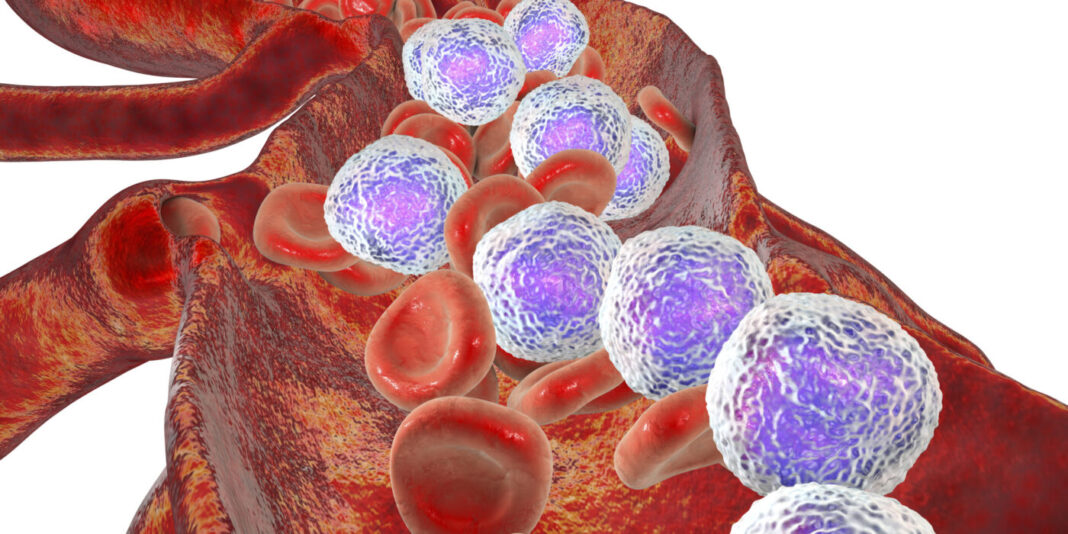Acute lymphoblastic leukemia (ALL) is a type of cancer in which the bone marrow makes too many lymphocytes and can develop in children or adults. ALL spreads to the blood fairly quickly, and then may spread to other areas of the body. Treatment options can involve systemic and/or intrathecal chemotherapy, radiation therapy, targeted therapy, and/or a stem cell transplant. Chemotherapy has helped make ALL one of the most survivable childhood cancers. Now, an international team of researchers have demonstrated how chemotherapy drugs called thiopurines can lead to mutations that set patients up for relapse.
Their findings were published in the journal Nature Cancer in a paper titled, “Chemotherapy and mismatch repair deficiency cooperate to fuel TP53 mutagenesis and ALL relapse.”
“Chemotherapy is a standard treatment for pediatric ALL, which sometimes relapses with chemo-resistant features,” wrote the researchers. “However, whether acquired drug-resistance mutations in relapsed ALL pre-exist or are induced by treatment remains unknown. Here we provide direct evidence of a specific mechanism by which chemotherapy induces drug-resistance-associated mutations leading to relapse.”
“The findings offer a paradigm shift in understanding how drug resistance develops,” explained Jinghui Zhang, PhD, chair of the department of computational biology at St. Jude Children’s Research Hospital. “The results also suggest possible treatment strategies for ALL patients who relapse, including screening to identify those who should avoid additional thiopurine treatment.”
The findings provide the first direct genomic and experimental evidence in pediatric cancer that drug-resistant mutations can be induced by chemotherapy and are not always present at diagnosis.
Relapse remains the leading cause of death worldwide for children and adolescents with ALL, although 94% of St. Jude patients with ALL become five-year survivors.
The researchers analyzed more than 1,000 samples collected from patients in the United States, China, and Germany. The samples collected were taken at different times including diagnosis, remission, and relapse.
Co-first author Samuel Brady, PhD, of St. Jude computational biology, identified a mutational signature that helped decipher the process. He and his colleagues linked increased thiopurine-induced mutations to genes such as MSH2 that become mutated in leukemia. The mutations inactivated a DNA repair process called mismatch repair and rendered ALL resistant to thiopurines. The mutation, TP53 R248Q, further progressed resistance to multiple chemotherapy drugs, including vincristine, daunorubicin, and cytarabine.
“This study not only changes our ALL treatment considerations, but also opens the door to study mechanistically how defective repair generates drug-resistant mutations,” Zhou said.
“In the future, it may be possible to monitor bone marrow during treatment as a way to detect these mutational signatures early enough to help identify at-risk patients who may be candidates for emerging therapies like CAR-T cells,” Zhang said. But the researchers stressed that the benefits of thiopurine treatment outweigh the risks, noting that most patients are unaffected by thiopurine-induced mutations.


